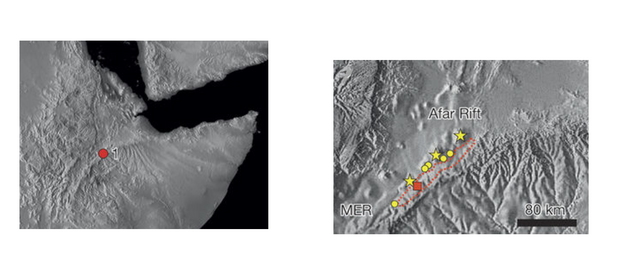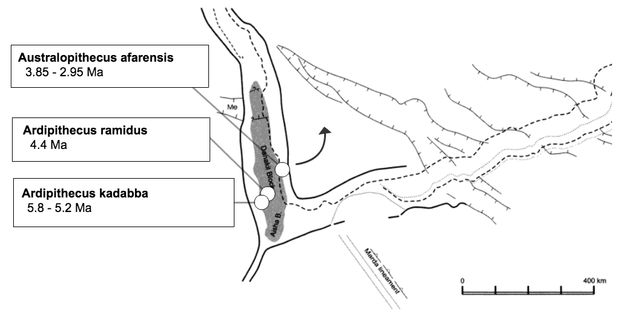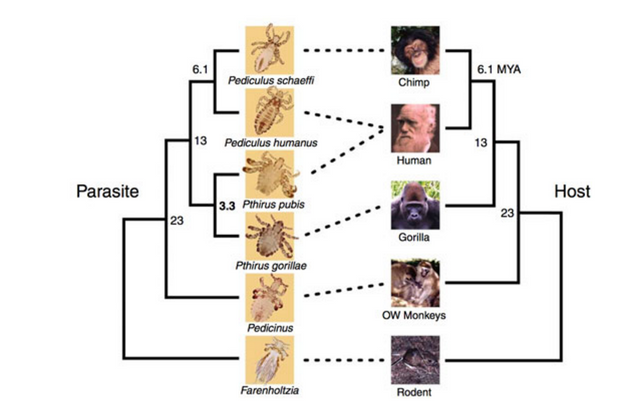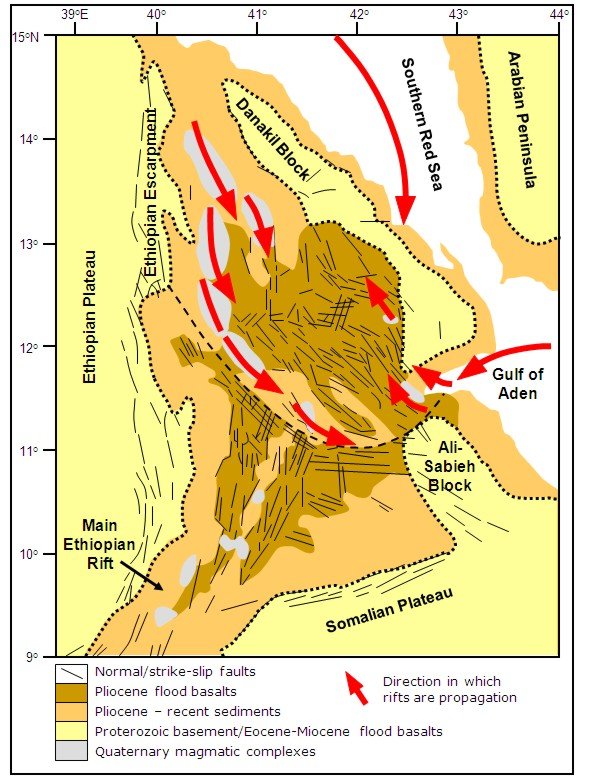Chororapithecus abyssinicus (10–10.5 Ma) is found at the Chorora Formation at the southern margin of the Afar rift. The teeth of Chororapithecus appear specialized for eating stems and leaves, and resemble those of modern gorillas, which suggests that Chororapithecus represents an ancestral branch of the gorilla lineage.[1]

Ardipithecus kadabba (5.8–5.4Ma) is found further north, along where the coast-line of Danakil was in the late Miocene.

The chimpanzee-human-last-common-ancestor (CHLCA) split was the result of the Mid Ethiopian Rift (MER) extending into the Afar rift, to the west of Danakil, while the Red Sea Rift extended southwards to the east, separating a 500km long piece of the continent from the Nubian, Somalian and Arabian mainland.
The human and chimpanzee lice Pediculus diverged as the ancestors of Ardipithecus and Australopithecus became geographically isolated on Danakil, and as Australopithecus afarensis developed hairlessness (while retaining pubic hair as a “sexual organ” to hold sexual pheromones) the Pediculus lice were left to colonize hair on the head of Australopithecus.

The Pliocene flood basalts began to erupt 4 million years ago, and would over time have formed a land-bridge that broke the isolation of Danakil. Australopithecus afarensis disappears from the fossil record in Afar around 2.9Ma (around the same time when Hippopotamus afarensis disappears as well.[2] )

Host switch from Gorilla to Australopithecus
The host switch of Pthirus gorillae to the pubic hair of Australopithecus afarensis (which would have been coarse and bushy enough for the gorilla lice to grip on to) is estimated to have occurred around 3.3 million years ago. The Chororapithecus abyssinicus fossils (2007) show that there were gorilla ancestors present just south of Danakil. The end of the geographical isolation of Danakil could possible be when the host switch happened, gorillas build leaf nests to sleep in, and the “beach-ape” Australopithecus may have come into contact with these as they migrated south-ward in search of a new ecological niche.
That was really interesting to know many things hehe
Downvoting a post can decrease pending rewards and make it less visible. Common reasons:
Submit